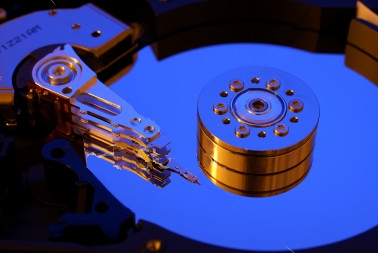Research and Integration
- Cluster: Modeling and Validation
- Cluster: SW Synthesis, Code Generation and Timing Analysis
- Cluster: Operating Systems and Networks
- Cluster: Hardware Platforms and MPSoC Design
- Intercluster activity: Design for Adaptivity
- Intercluster activity: Design for Predictability and Performance
Cluster: Hardware Platforms and MPSoC Design
Brief State of the Art
 Modern embedded systems for multimedia, imaging, and signal processing are characterized by high performance requirements on the one hand and stringent power requirements on the other hand. Often, these requirements can no longer be satisfied by embedded system architectures based on a single processor. Thus, emerging embedded system-on-chip platforms are increasingly becoming multiprocessor architectures. To compensate the high nonrecurring costs for designing and manufacturing multiprocessor chips, however, they need to be flexible such that they can be reused in different systems. This flexibility calls for programmability and sometimes reconfigurability. As a result, embedded systems platforms often have a heterogeneous architecture consisting of fully dedicated hardware components and different programmable processor cores.
Modern embedded systems for multimedia, imaging, and signal processing are characterized by high performance requirements on the one hand and stringent power requirements on the other hand. Often, these requirements can no longer be satisfied by embedded system architectures based on a single processor. Thus, emerging embedded system-on-chip platforms are increasingly becoming multiprocessor architectures. To compensate the high nonrecurring costs for designing and manufacturing multiprocessor chips, however, they need to be flexible such that they can be reused in different systems. This flexibility calls for programmability and sometimes reconfigurability. As a result, embedded systems platforms often have a heterogeneous architecture consisting of fully dedicated hardware components and different programmable processor cores.
A considerable number of multi-processor design frameworks have been proposed in the past, such as Artemis, Distributed Operation Layer (DOL), Embedded System-Level Platform Synthesis and Application Mapping (ESPAM), Koski, or StreamIt. While all frameworks provide an automated path from application specification to system implementation, they focus on different aspects of the design flow. In ArtistDesign, we attempt to unify the approaches developed by the various partners and extend them towards new methods for performance analysis, design space exploration and adaptivity.
The past several years have seen an increasing interest in wireless sensor nodes which are scavenging energy from their environment. In [5], several technologies have been discussed how, e.g., solar, thermal, kinetic or vibrational energy may be extracted from a node‘s physical environment. In particular, techniques to harvest energy via photovoltaic cells have attracted the interest of the sensor network community [6]. Solar energy is certainly one of the most promising energy sources and typical environmental monitoring applications have access to solar energy. If sensor nodes are equipped with photovoltaic cells as energy transducers, the autonomy of sensor nodes is increased substantially since frequent recharging and replacement of the batteries becomes unnecessary. Ideally, sensor nodes once deployed in a harsh environment benefit from a drastically increased operating time and become virtually immortal.
Clearly, the power generated by small solar cells is limited. Sensor nodes executing a given application may frequently run out of energy in times with insufficient illumination. If one strives for predictable, continuous operation of a sensor node, common power management techniques have to be reconceived. In addition to perform classical power saving techniques, the sensor node has to adapt to the stochastic nature of solar energy. Goal of this adaptation is to maximize the utility of the application in a long-term perspective. The resulting mode of operation is sometimes also called energy neutral operation: The performance of the application is not predetermined a priori, but adjusted in a best effort manner during runtime and ultimately dictated by the power source.
Therefore, storage devices like batteries are solely used as energy buffers to compensate the variations of the underlying energy source. It is the goal of the interaction in ArtistDesign to improve the state-of-the-art in energy scavenging and the corresponding algorithms to adapt the running applications so as to optimize a long-term reward function.
Design and analysis of biochip platforms from a computer science point of view is still largely inexplored in Europe. Only a few groups are working on CAD techniques for digital microfluidic based biochips. More groups are working on these biochips from the physical and materials science perspective.
(c) Artist Consortium, All Rights Reserved - 2006, 2007, 2008, 2009

